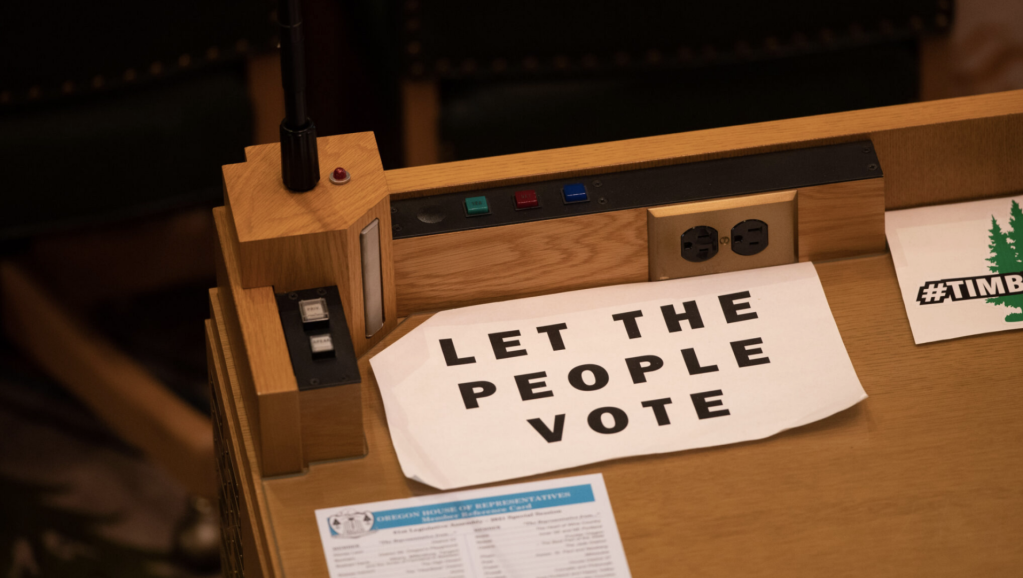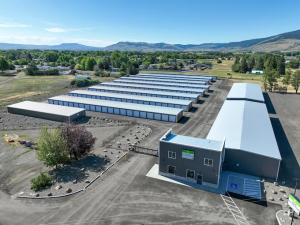Oregon voters reject ranked choice voting measure
Published 8:15 pm Tuesday, November 5, 2024

- A sign on a desk in the House Chamber at the Oregon State Capitol is seen in 2021. Legislators referred to voters a measure expanding the use of ranked choice voting in Oregon, but voters rejected the idea in the Nov. 5, 2024 general election.
Oregon voters have rejected a proposal to adopt ranked choice voting statewide while the state’s largest city conducted its first ranked choice election.
Trending
According to the Secretary of State’s Office, nearly 60% of voters opposed Measure 117, compared with 40% in favor. The Associated Press called the race before 10 p.m.
In ranked choice voting, voters rank candidates in order of preference. Anyone who gets more than 50% of the first-choice votes wins. If no one gets a majority, the candidate with the fewest first-choice votes is eliminated, and their first-choice votes then go to the second-choice person on that ballot. That continues until there is a winner.
Republicans opposed Measure 117, saying it’s confusing and would make voting too complicated for Oregonians. County clerks also opposed the measure, saying it was poorly written and that the system needs to be “thoroughly” vetted.
Trending
“Any ensuing confusion or issues will likely lead to your election officials sitting through legislative hearings trying to amend how this is currently written,” the clerks said in the Voters’ Pamphlet.
Opponents didn’t raise much money to defeat it — only about $2,500 — while supporters raised more than $4 million to pass the measure.
Mike Alfoni, campaign manager of the Yes on Measure 117 campaign, said changing the status quo isn’t easy.
“We knew we had an uphill battle and are proud of how close we came — with voters in Multnomah and Benton counties supporting Measure 117 — counties that are already using ranked choice voting for their local elections,” Alfoni said. “We’re confident that there’s a bright future for continued election reform in Oregon.”
Lawmakers referred Measure 117 to the ballot to give voters the option of adopting ranked choice voting for primary and general election races for president, U.S. senator, U.S. representative, governor, secretary of state, attorney general, state treasurer and labor commissioner. The measure also would authorize — but not mandate — local governments to adopt ranked choice voting for their races.
Lawmakers excluded their races after local election officials expressed concern about lengthy ballots. That exception is likely something that raised suspicions among voters, analysts said.
They also noted that the last time voters opted to change the voting system was in 1998, with the approval of vote by mail. That came after more than a decade of testing at the local level.
Oregon’s one experiment with ranked choice voting — in Benton County — went into effect in 2020. Ranked choice voting is also used in a few U.S. cities and in the states of Alaska and Maine. Portland used ranked choice voting in this election to form its new city government and Multnomah County will begin using it in 2026.
The ballot referral comes at a time of mounting disillusionment with the political system. In a recent Portland-based Values and Beliefs Center survey, 75% of respondents said the most politically popular candidate, not the most qualified, wins, and 58% said that the current electoral system produces outcomes that reflect the values and beliefs of a small group of political Oregonians, not the values and beliefs of typical Oregonians from around the state.
Ranked choice voting tends to eliminate the more extreme candidates, especially in primaries, while supporting candidates with the widest support across the electorate. Supporters also say it increases voter participation.
Benton County will continue to use ranked choice voting while the same winner-take-all system would apply to other elections as it does now.
Oregon joined four other states — Alaska, Colorado, Idaho, Missouri and Nevada — in asking voters about ranked choice voting in this year’s election.
Union County voters turned thumbs-down on Ballot Measure 117, with 3,472 “yes” votes and 9,276 “no” votes, according to unofficial returns from the Oregon Secretary of State.









